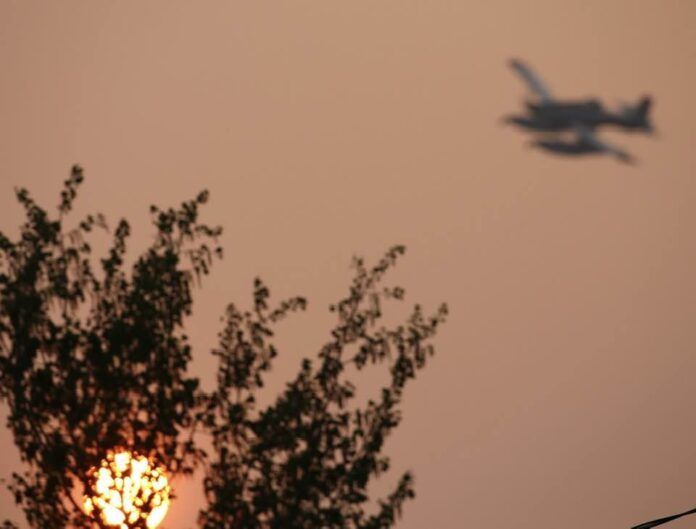Firefighters in Hay River continue to do what they can to keep the community safe in the latest update from NWT Fire.
No additional structures were lost in the Hay River/K’átł’odeeche fire yesterday thanks to their efforts. The fire is still measured as only one kilometre west of the Hay River airport, and 1.5 kilometres west of the town centre. There are currently over 200 personnel on the scene, 12 helicopters, and 21 pieces of heavy equipment with more on the way. Airtankers are also being employed to assist with the fire.
Temperatures continue to be high, and winds are expected to turn south later today and overnight. NWT Fire is expecting the fire activity to increase due to dry conditions, which could push the fire either North or East, and plans are in place to deal with those situations if they become reality. Smoke is causing issues with visibility for aircraft, but opportunities will be taken when they are available.
The fire is mainly being held to the west of Highway 2, and extra effort is being made to protect residential areas. Hay River, WestPoint First Nation, and the surrounding area are at the most risk, due to how close the fire sits, and the dry conditions in the area. The fire was able to cross Highway 5 between km 6 and 20; and Highway 2 in several areas near the Highway 5 Junction.
Successful ignition operations from the ground and air have been able to slow the fire’s progression, and structure protection remains a constant priority, which has been able to save several buildings in the last 24 hours.
There are several protective techniques being used by heavy equipment in the area. Building dozer guards are digging away burnable vegetation to the dirt to create a break in forest fuels, providing a defensible area for firefighters, and discouraging further growth. This is being done to the south of Hay River and the K’átł’odeeche First Nation. Additional high volume water equipment is expected to be deployed along these lines.
Tightlining is also being done, which involves digging vegetation away from the edge of the fire to try and prevent further spread.





